ECHO recognizes climate change as a profound reality faced by small-scale farmers. Many of our publications have focused on helping farmers cope with related challenges such as heat and drought.Increasing farmer resilience and minimizing risk have been key elements of the practices we have written about over the years. We encourage “no regret” strategies, approaches that steward the land well and improve livelihoods, regardless of whether or not farmers face immediate changes to climate (Flanagan, 2015a). However, we also view farmers as having an integral role in mitigating some of the driving forces of climate change.
What are farmers telling us?
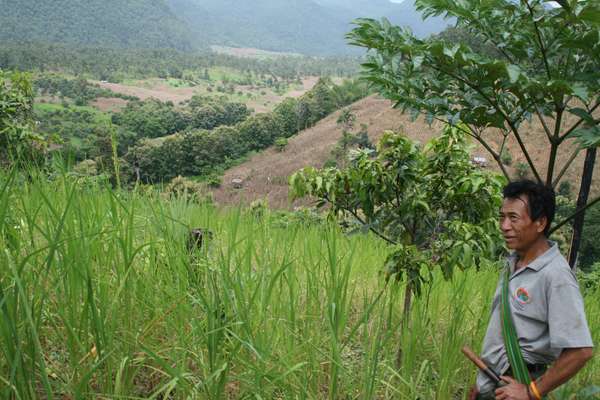
Figure 1. An example from Thailand of small-scale agricultural landscapes affected by interacting influences of climate and farmer management. Source: Tim Motis
Farmers and development practitioners often tell us of the adverse effects of changing climate that they experience in their communities. Patrick Trail, on staff with ECHO in Thailand, has a list of “five questions I ask every farmer.” One of those is, “As a farmer, what keeps you up at night?” or, asked in a different way, “What worries you most about the future of your farm and way of life?” Having visited about 150 farms in Southeast Asia, Patrick commented:
“I’d say that, as high as half the time, the answer is related to climate change...The most interesting observation I have made is that older farmers in rural areas, far removed and uneducated, very consistently talk about how seasonality has shifted. I often hear things like, ‘We used to know the exact week or window that the rains would begin, and we knew when to plant.’ ‘Now the rains might come early or late, may be sporadic, and may end early or flood late.’ These observations seem to indicate that climate is doing different things than it used to just 50 years ago.”
Why are farmers key to climate change solutions?
Agriculture significantly affects climate change
Climate change is a result of heat trapped in the atmosphere by the accumulation of “greenhouse gases” (GHG) emitted naturally and through human activity. These gases consist mainly of carbon dioxide (CO2), methane (CH4), and nitrous oxide (N2O). While agriculture is not the sole source of GHG, it does account for a large percentage of global emissions (24% according to EPA, 2020). Other human activities that generate these gases include the burning of fuels for electricity and heat, industry, and transportation.
Table 1 lists some agriculture-related contributors of GHG. Notice those that are associated with land degradation. Soil improvement, on the other hand, increases plant growth, which in turn keeps carbon (from CO2) on the land—in plant tissue and soil—instead of in the air. Later in this document, we highlight principles through which farmers can reduce GHG emissions from their lands and thereby participate in addressing climate change.
| Table 1. Some agricultural contributors to emissions of agriculturally important greenhouse gases. | |
|---|---|
| Greenhouse gas | Contributors* |
| Carbon dioxide | Deforestation and land clearing |
| Soil degradation and loss | |
| Burning of plant biomass | |
| Methane | Digestion process of ruminant livestock |
| Decomposition of organic matter in flooded rice fields | |
| Decomposition of manure where oxygen is lacking, as often occurs with livestock managed in small spaces | |
| Nitrous oxide | Denitrification, the biological conversion of nitrate (NO3-) to N2O, which occurs when oxygen is lacking |
| Applying nitrogen fertilizers in excess of plant demand | |
| *Contributors related to land degradation are highlighted in brown. | |
Smallholders manage significant portions of land
Approximately 475 million households farm less than 2 ha of land in rural areas of economically poor countries (Lowder et al., 2016). Small farms (< 2 ha) occupy 12% of the world’s agricultural land. Within various regions, however, that percentage is higher. In Sub-Saharan Africa and South Asia, small farms occupy as much as 30% to 40% of agricultural land. Despite having few resources and facing difficult realities, these farmers produce food while making land-management decisions that impact much of the planet’s surface (Figure 1).
Land care necessitates farmer engagement
Farmer involvement, buy-in, and ownership are foundational to agricultural improvements in general. Initiatives to improve agricultural lands will not succeed unless farmers accept the practices being promoted. Farmers have an in-depth familiarity with their soils and livestock. Their knowledge, participation, and resources should be honored. These and related concepts are expanded on in ECHO summaries of information developed by Modernizing Extension and Advisory Services (MEAS).
What is carbon capture?
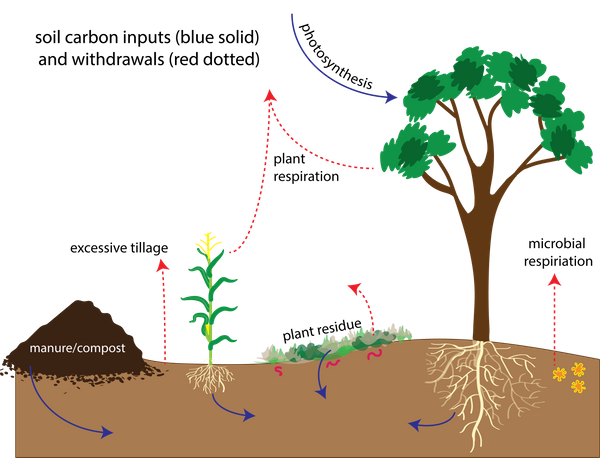
Figure 2. An illustration of carbon flow and resulting gains and losses of organic carbon in the soil. Source: Stacy Swartz
From an agricultural perspective, carbon capture (also called carbon sequestration) is the storage—on land—of CO2 removed from the atmosphere. The removal step relies mainly on photosynthesis, the process whereby plants use the sun’s energy to make carbohydrates—which contain carbon—from CO2 and water.
Carbon in plants moves into the soil in various ways (Figure 2). Roots release carbon-containing substances. Soil fungi called mycorrhizae obtain carbon from plant roots, while using their vast network of fungal threads to help plants gather nutrients and moisture. When plants and microbes die, some of the carbon in them is incorporated into soil organic matter. This happens as earthworms and other soil fauna transport surface residue into the soil, and as organic material is decomposed into stable forms (e.g., humus).
However, carbon in plants and soil can also move back into the atmosphere through decomposition and respiration. As soil microbes break down plant residue, they release CO2 into the air as they “breathe” or respire. Understanding that carbon does not stay in one place forever, the goal of carbon capture is to keep as much carbon on the land as possible, for as long as possible.
Why do soil carbon storage and land care matter?
Soil carbon is linked to the benefits of soil organic matter
Soil organic matter consists of plant or animal tissue in different stages of decomposition. Farmers reap numerous benefits from organic matter. Among them are a source of nitrogen, improved water infiltration, and greater retention of moisture and nutrients. These are important for small-scale farmers who have few options for fertility inputs, especially if they live in drought-prone areas. Organic matter is also rich in carbon, so any practice that increases organic carbon in the soil also increases soil organic matter, benefiting farmers.
Atmospheric carbon can be transferred to the soil
*"CO2 equivalent” is a metric unit of measure for the amount of CO2 equivalent to the warming potential of GHGs. As an example, 1 ton of CH4 equals 25 tons of CO2 equivalents, because the global warming potential of CH4 is 25 times that of CO2. N2O has 298 times more warming potential than CO2. CO2 is the most prevalent GHG and the one most easily addressed.
Globally, soils contain approximately 1500 gigatons (Gt; 1 Gt = 1 billion metric tons) of organic carbon. That amounts to more carbon than in the atmosphere (760 Gt) and in plants (560 Gt) combined (Lal, 2004; Paustian et al., 2019). Most of the world’s agricultural soils hold less carbon than they did before they were farmed, due to the clearing of vegetation for annual cropping. This presents farmers with an opportunity to increase the amount of carbon stored in their soils. For instance, conservation agriculture could sequester an estimated 9.4 to 13.4 Gt of CO2 equivalents* by 2050 (Project Drawdown, 2020).
Soil protection keeps CO2 from being lost to the atmosphere
Minimizing soil tillage and erosion helps keep topsoil intact. One characteristic of healthy topsoil is the binding of individual soil particles into clumps called aggregates. Organic matter helps hold aggregates together, and aggregates protect the organic matter inside them (Six et al., 2002). When soil aggregates are broken apart and dispersed, the organic matter they contain is more susceptible to microbial breakdown and subsequent release of CO2. Land degradation often leads to depletion of soil organic matter. Conversely, restoring abandoned, degraded farmland could sequester an estimated 12 to 20 Gt of CO2 equivalents by 2050 (Project Drawdown, 2020). Farmers, of course, are crucial to making these lands productive again.
A few principles for carbon storage strategies in the tropics
An abundance of sunlight
The tropics are blessed with sunlight, which is necessary for photosynthesis. Think of photosynthesis as a freely-available resource that farmers harness with each square meter of land occupied by plants. Of course, sunlight is not the only requirement for photosynthesis. Water, for example, is also critical. Cropping seasons in monsoonal areas are limited by the length of the rainy season. However, any practice that extends the growing season not only increases food production but also captures atmospheric carbon.
Rapid cycling of soil carbon
More direct sunlight in the tropics means they tend to have higher temperatures than temperate areas. Many parts of the tropics also receive high rainfall. The combination of heat and moisture favor rapid decomposition of organic material by soil microbes, which releases CO2 to the atmosphere. Moreover, some tropical soils are sandy or are comprised of clays with little capacity to form aggregates that would protect organic matter from microbial decomposition. These factors can make it difficult to build soil organic matter and to keep carbon losses from outpacing carbon gains.

Figure 3. Plant-based mulch on the soil surface. Note the mixture of living/green and dead/brown material. Source: Tim Motis
Under these circumstances, maintaining plant matter on the soil surface is key (Figure 3). Research in no-till sugar cane fields in Brazil showed that soil carbon increases might have resulted even more from the maintenance of crop residues on the soil surface than from the lack of soil disturbance (Campos et al., 2011; Cherubin et al., 2018). Plant-based mulch protects the soil from intense heat, reducing carbon losses by slowing microbial respiration. At the same time, the mulch slowly releases nutrients that plants need. Keeping the soil covered with mulch mimics the blanket of leaves that is found in rainforests.
Limited availability of organic inputs
After crop harvest, many small-scale farmers need the residue (leaves, stalks) for livestock feed, as kindling to start cooking fires, or for other uses. In semiarid climates, the amount of plant biomass available for mulch is limited by low rainfall. Recognize these limitations when working with farmers to improve their soils. At the same time, look for creative ways to increase the availability of organic matter for soil improvement and, ultimately, soil carbon storage. A complete strategy to generate organic matter for soil enrichment could include one or more of the following techniques:
- Leave at least a portion of crop residues in fields, if at all possible.
- Take advantage of all sources of organic material, including animal manure and compost.
- Dig microcatchments, such as those used in the zai pit system (Motis et al., 2013), to concentrate fertility, harvest rainwater, and use available inputs as efficiently as possible. This approach is appropriate for dry climates.
- Integrate legumes or multipurpose trees and shrubs that can be pruned periodically (to minimize competition with crops for light, and to provide mulch). Lahmar et al. (2012) discuss an approach for the Sahel that combines zai holes (into which millet is planted) and native shrubs (Piliostigma reticulatum and Guiera senegalensis). Farmers prune native shrubs before the rainy season so that they do not shade the grain crop; the shrubs keep growing during the dry season and are among the last plants during the dry season to be grazed by livestock.
Non-uniformity of tropical and sub-tropical regions
Climatic conditions in the tropics vary. The tropics are often associated with heat and humidity, but there are also very dry regions, as well as highland areas that are quite cool. This means that strategies need to be appropriate to conditions and to farmer needs within the local context.
Practices
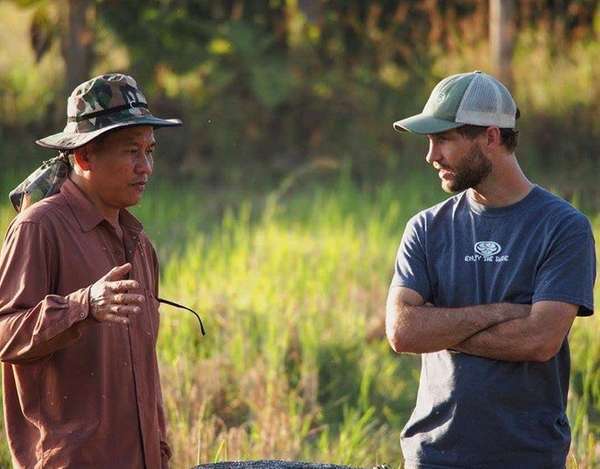
Figure 4. Gathering farmer knowledge, as illustrated here, is essential to involving farmers in climate change mitigation. Source: Patrick Trail
How can smallholder farmers help mitigate against climate change? An article in EDN 148 described principles on which the strategies presented in this follow-up article are based. Key to any agricultural approach for dealing with climate change is dialogue with farmers (Figure 4), whose knowledge, experience, and participation are critical for success. In our conversations, we should distinguish between adaptation and mitigation. Adaptation strategies increase farmers’ resilience and reduce their vulnerability to loss. Mitigation strategies directly reduce the causes of climate change. Some farming practices are helpful both for adaptation and for mitigation. For example, reduced tillage makes a field less vulnerable to erosion (adaptation) while also allowing for more carbon to be stored in the soil (mitigation). Below are a few strategies that are familiar to ECHO and that have mitigation potential in addition to building farmers’ resilience (adaptation) to climate change. Content here builds on an EDN 128 article on carbon farming by Eric Toensmeier (2015).
Annual Cropping Systems
Integrating green manure cover crops (GMCCs) with staple grains
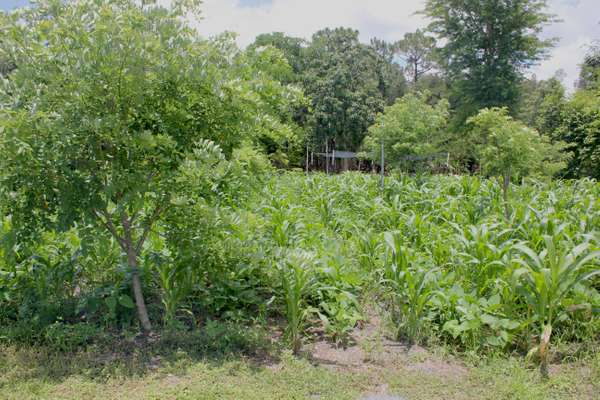
Figure 5. Cowpea (Vigna unguiculata) and gliricidia (Gliricidia sepium) as an annual and perennial legume, respectively, intercropped with maize (Zea mays). Source: Tim Motis
GMCCs cover and improve the soil in farmers’ fields. GMCCs are often legumes, which have a unique ability to improve soil fertility by taking nitrogen from the atmosphere and turning it into a form that can be used by plants. Legumes adapted to the tropics include both annual and perennial species (Figure 5). In the second edition of his book Restoring the Soil, Bunch (2019) documents 117 ways in which smallholders use GMCCs. The book includes a decision-making framework for matching GMCC systems to your local context. Selecting Legumes as Green Manure/Cover Crops (ECHO Staff, 2017) and ECHO’s interactive GMCC Selection Tool may also be helpful for selecting context-appropriate GMCCs. Farmers are most likely to grow GMCCs that provide benefits in addition to soil improvement, such as edible beans, fodder, and/or weed suppression.
* The percentage of carbon in plants ranges from 46% to 59% (Scharlemann et al., 2014), depending on the crop and plant part (e.g., leaves versus wood). Generally, a value of 50% of dry plant weight is assumed (Gedefaw et al., 2014). Thus, even without knowing the exact carbon concentration as measured in a laboratory, we can multiply dry biomass by 0.5 to estimate carbon in plant material.
The amount of carbon sequestered in soils by GMCCs depends, in large part, on how much plant material is grown and left on the soil. You can calculate approximately how much carbon is in that biomass by collecting and drying leaves, stems, and roots from a small plot of known dimensions, such as 1 square meter. Ideally, drying will be done in a cabinet with air heated to about 60°C and circulated with fans; however, air-drying in the sun is sufficient for a rough calculation. Weigh the plant material every day or two until the dry weight is reached—the point at which there is no more weight loss. (Cover the biomass or bring it indoors, as needed, to keep it from getting rained on.) Multiply the dry weight by 0.5* to estimate the mass of carbon in the 1 m2 of biomass. One ha is 10,000 m², so multiply the result by 10,000 to calculate the mass of carbon per ha. For greater accuracy, repeat these steps in three or four places in a field, and average the results.
Fujisaki et al. (2018) found that up to 36% of carbon inputs were converted to soil organic carbon. Despite the fact that not all carbon in plants transfers to the soil (some moves back into the atmosphere), GMCCs can still increase the amount of carbon stored in soils. On a sandy-loam soil in Benin, a system involving maize and velvet bean (Mucuna pruriens) added 1.3 metric tons of soil carbon per ha each year to the top 40 cm of soil (Barthès et al., 2004).
Conservation agriculture
Conservation agriculture includes three main elements: constant soil cover, minimum soil disturbance, and crop diversity (ECHO Staff, 2016). Mulch protects soil from erosion, preserving soil carbon. Mulch itself consists of living or dead plant material, so it adds organic carbon to the soil. Zero or reduced tillage is necessary to maintain surface mulch. Reduced tillage methods that preserve surface mulch include planting seeds in holes dug with sharpened sticks or hoes, or planting in narrow furrows created with rippers.
Most small-scale farmers find it difficult to maintain soil cover with staple crop residues alone, due to competing uses such as livestock feed. The emphasis on crop diversity with conservation agriculture addresses this by adding vegetation for mulching through practices like crop rotation and intercropping. Look for crops that maximize carbon inputs above and below the soil. Legumes such as lablab (Lablab purpureus) and pigeon pea (Cajanus cajan) produce an abundance of above-ground biomass, and their deep roots deposit carbon into the soil. At the same time, they add nitrogen to the soil, which supports crop biomass production.
Soil carbon storage with conservation agriculture depends on how well the crops grow and, in turn, how much biomass they return to the soil. Studies in Brazil have shown that a combination of vegetative cover and no-till added 0.4 to 1.7 metric tons of carbon per year to the top 40 cm of soil (Bernoux et al., 2006). Gains in soil carbon are most likely to occur when crop selection and farming practices take into account local growing conditions and farmers’ needs and constraints. Look for efficient ways to meet crop requirements for fertility and water. Select tillage and seeding practices based on tools that can be made and maintained locally, and that are not unnecessarily laborious. Select intercrops or rotational crops based on what seed is readily available.
System of Rice Intensification (SRI)
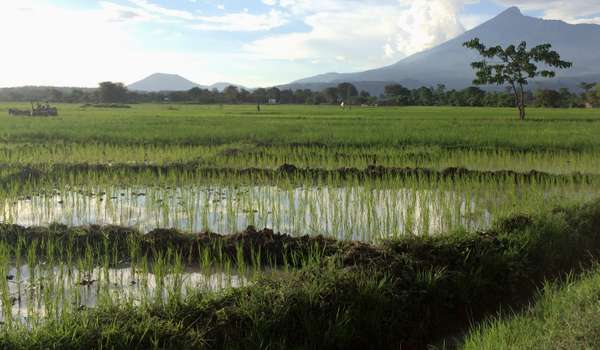
Figure 6. Flooded rice production. Source: Stacy Swartz
Rice is a major staple, often grown in flooded paddies (Figure 6). The water in rice paddies replaces oxygen in the soil, creating anaerobic (lacking oxygen) conditions. Microbes that produce methane (CH4) thrive in such an environment, which is why rice cultivation accounts for at least 10% of agricultural greenhouse gas (GHG) emissions (Project Drawdown, 2020). The SRI method calls for intermittent watering instead of flooding (Berkelaar et al., 2015), which means less CH4 is produced. In Malaysia, CH4 emissions were nearly three times less with SRI methods than with conventional flooding (Fazli and Man, 2014). The SRI method also includes organic fertility inputs, which add carbon to the soil. According to Project Drawdown (2020), 4 to 5 million farmers practice SRI, and SRI has the potential to sequester significant amounts of carbon (2.79 to 4.26 billion metric tons of CO2 equivalents between 2020 and 2050).
Tree-based farming
Agroforestry combines trees and agriculture. Trees and shrubs reduce GHG by storing carbon in their living tissues, in wood products, and in the soil. When considering whether or not to promote trees in an area, take note of the native vegetation. Do trees naturally grow there? If not, it is probably not wise to plant trees there. Plants found in open savannas and grasslands effectively store carbon below-ground, and they generally do so with less water and nutrients than trees (Veldman et al., 2015). Where it does make sense to plant trees, consider tree survival rates in addition to the number of trees planted. Trees that provide needed resources for farmers, and that are integrated into their cropping systems, are much more likely to survive than randomly-planted trees. Below are several practical ways in which small-scale farmers practice agroforestry.
Farmer Managed Natural Regeneration (FMNR)
FMNR is a reforestation approach in which farmers manage regrowth of an “underground forest” consisting of stumps of trees that were previously cleared for growing crops (Rinaudo, 2010). Farmers select which stumps to manage and decide how many stems they will allow to regrow on each stump. They know which trees will benefit their crops and which will compete with them. The trees benefit the soil by dropping their leaves (mulch) and by reducing soil temperature, water evaporation, and erosion. They also store carbon; between 2006 and 2018, FMNR on 2,700 ha of land in Ethiopia sequestered 181,650 metric tons of CO2 (World Vision, 2019). Community residents reported numerous benefits that included less soil erosion, improved soil fertility, increased rainfall, and better air quality.
Family woodlots
Caretakers and beneficiaries are not always clearly identified in large-scale tree planting projects. This is not a problem with small family woodlots devoted to household use (Figure 7A). As explained by Azor and Blank (2010), a woodlot consists of coppicing tree species such as Senna siamea and Leucaena spp. A tree that coppices well will produce new shoots after being cut very low on the main stem (trunk). Coppicing allows for multiple harvests from a single tree over time. Trees sequester the most carbon when they are actively growing; this means the regrowth that occurs after coppicing will store significant amounts of carbon. Small woodlots have proven successful in Haiti, where the Mennonite Central Committee promoted them through an effort called “ti fore” (Creole for “little forest” or microforest).
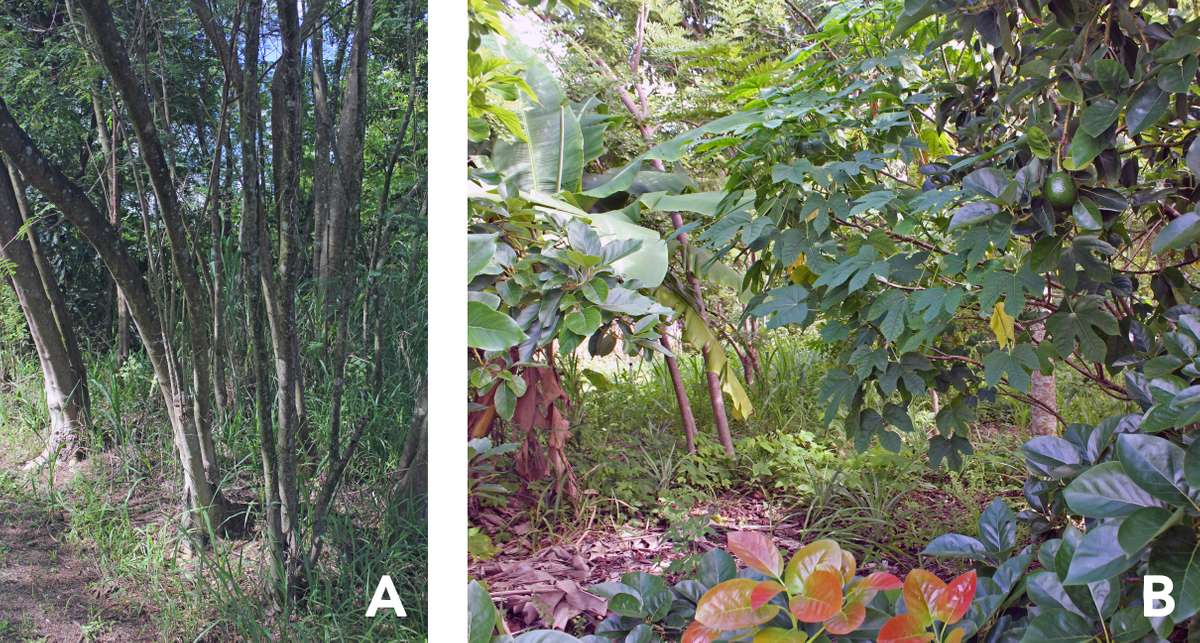
Figure 7. Woodlot (A) and food forest (B) demonstrations at ECHO’s Global Farm in Florida. Source: Tim Motis
Tree gardens and food forests
Tree gardens consist of fruit trees and other beneficial trees grown together with annual crops (Danforth and Noren, 2011). Farmers protect the trees, along with their crops, from animal grazing and fire. This concept has worked well in Central Africa. Food forests (Figure 7B) are popular in Southeast Asia, where mixtures of edible tree species are grown together in small plots. Tree gardens and food forests work well in small-scale agriculture systems. For more information, see the “Fully Perennial Systems” section of Toensmeier’s 2015 carbon farming article in EDN 128.
Land-care approaches
Sloping Agricultural Land Technology (SALT)
SALT, an approach that integrates aspects of soil conservation and agroforestry, was developed to reduce soil erosion on hillsides (MBRLC, 2012). Field crops are grown in 3- to 5-m wide bands between double rows of leguminous trees and shrubs that are planted along contour lines. The nitrogen-fixing trees and shrubs are managed as hedgerows, with pruned vegetation used as mulch for the crops between hedgerows. Farmers modify the system based on the types of crops and trees they want to grow. In a five-year study in India, on land with 2 to 5% slope, gliricidia hedgerows in combination with grass strips reduced soil loss by 35% and added 1.35 t/ha/year of organic carbon to the soil 1 m away from the hedgerows (Lenka et al., 2012). Though that system is not quite the same as SALT, their findings document the potential of contoured hedgerows to conserve soil and store carbon.
Sand dams for restoring watersheds
Stern and Stern (2011) describe a sand dam as “a reinforced concrete wall built across a seasonal river to hold underground water in sand.” Sand dams are an excellent option for harvesting rainwater in dryland regions. Water stored in the sand provides drinking water. Sand dams also increase groundwater, especially when multiple dams are constructed within a watershed. Based on satellite imagery, Ryan and Elsner (2016) found that sand dams consistently increased vegetation. They concluded, “Sand dams can…be a promising adaptation response to the impacts of future climate change on drylands.” Sand dam initiatives can be accompanied by agricultural activities that sequester carbon (Maddrell, 2018). Contour-based plantings, for instance, reduce erosion on either side of a dam and have the potential to increase soil carbon. Indigenous groups in Kenya and elsewhere have done extensive work in promoting and constructing sand dams.
Concluding thoughts
Farmers are well-positioned to implement site-specific solutions to climate change. Here we have highlighted a few cropping systems and land-care approaches that farmers can and/or are using to produce food in ways that reduce GHG. No single system or strategy works for--or is acceptable to--every farmer. Work with farmers to identify approaches that address climate change while also meeting their needs. An article titled Farmer Engagement in Agriculture Extension suggests practical ways to support farmers’ efforts to develop and test agricultural improvements (Flanagan, 2015b). Those ideas are also relevant in engaging with farmers to identify strategies for dealing with climate change.
References
Azor, J.R. and D. Blank. 2010. Coppicing woodlots. ECHO Development Notes 107:5-6.
Barthès, B., A. Azontonde, E. Blanchart, C. Girardin, C. Villenave, S. Lesaint, R. Oliver, and C. Feller. 2004. Effect of a legume cover crop (Mucuna pruriens var. utilis) on soil carbon in an ultisol under maize cultivation in southern Benin. Soil Use and Management 20:231-239.
Berkelaar, D., B. Thansrithong, R. Haden, R. Uprety, and R. Burnette. 2015. SRI, the System of Rice Intensification. ECHO Technical Note no. 82.
Bernoux, M., C.C. Cerri, C.E.P. Cerri, M.S. Neto, A. Metay, A-S. Perrin, E. Scopel, T. Razafimbelo, D. Blavet, M. de C. Piccolo, M. Pavei, and E. Milne. 2006. Cropping systems, carbon sequestration and erosion in Brazil, a review. Agronomy for Sustainable Development 26(1):1-8.
Bunch, R. 2019. Restoring the soil: How to use green manure/cover crops to fertilize the soil and overcome droughts. ECHO Inc.
Campos, B.H.C., T.J.C. Amado, C. Bayer, R.S. Nicoloso, and J.E. Fiorin. 2011. Carbon stock and its compartments in a subtropical oxisol under long-term tillage and crop rotation systems. Revista Brasileira de Ciência do Solo 35: 805-817.
Cherubin, M.R., D.M da S. Oliveira, B.J. Feigl, L.G. Pimentel, I.P. Lisboa, M.R. Gmach, , … C.C. Cerri. 2018. Crop residue harvest for bioenergy production and its implications on soil functioning and plant growth: A review. Scientia Agricola 75(3): 255–272.
Danforth, R. and P. Noren. 2011. Tree gardening. ECHO Technical Note no. 69.
ECHO Staff. 2016. Conservation agriculture. ECHO Best Practice Note no. 6.
ECHO Staff. 2017. Selecting legumes as green manure/cover crops. ECHO Best Practice Note no. 7.
EPA. 2020. https://www.epa.gov/ghgemissions/global-greenhouse-gas-emissions-data. Accessed 3 June 2020.
Fazli, P., and H.C. Man. 2014. Comparison of methane emission from conventional and modified paddy cultivation in Malaysia. Agriculture and Agricultural Science Procedia 2:272-279.
Flanagan, B. 2015a. Climate change and the role of development workers in helping rural agriculture communities adapt. ECHO Summary of MEAS Brief #3.
Flanagan, B. 2015b. Farmer engagement in agriculture extension. ECHO Development Notes 128:4-5.
Fujisaki, K., T. Chevallier, L. Chapuis-Lardy, A. Albrecht, T. Razafimbelo, D. Masse, Y.B. Ndour, and J. Chotte. 2018. Soil carbon stock changes in tropical croplands are mainly driven by carbon inputs: A synthesis. Agriculture, Ecosystems and Environment 259:147-158.
Gedefaw, M., T. Soromessa, and S. Belliethathan. 2014. Forest carbon stocks in woody plants of Tara Gedam Forest: Implication for climate change mitigation. Science, Technology and Arts Research Journal 3(1):101-107.
Lal, R. 2004. Soil carbon sequestration impacts on global climate change and food security. Science. 304:1623–7.
Lahmar, R., B.A. Bationo, N. Dan Lamso, Y. Guéro, and P. Tittonell. 2012. Tailoring conservation agriculture technologies to West Africa semi-arid zones: Building on traditional local practices for soil restoration. Field Crops Research 132:158-167.
Lenka, N.K., A. Dass, S. Sudhishri, and U.S. Patnaik. 2012. Soil carbon sequestration and erosion control potential of hedgerows and grass filter strips in sloping agricultural lands of eastern India. Agriculture, Ecosystems and Environment 158:31-40.
Lowder, S.K., J. Skoet, and T. Raney. 2016. The number, size, and distribution of farms, smallholder farms, and family farms worldwide. World Development 87: 16-29.
Maddrell, S.R. 2018. Sand dams: A practical & technical manual. Excellent Development.
[MBRLC] Mindanao Baptist Rural Life Center. 2012. ECHO Technical Note no. 72.
Motis, T., C. D’Aiuto, and B. Lingbeek. 2013. Zai pit system. ECHO Technical Note no. 78.
Paustian, K., E. Larson, J. Kent, E. Marx and A. Swan. 2019. Soil C sequestration as a biological negative emission strategy. Frontiers in Climate 1.
Project Drawdown. 2020. http://drawdown.org. Accessed 14 July 2020. [NOTE: This website gives detailed information on numerous practical ways to reduce atmospheric carbon.]
Rinaudo, T. 2010. Farmer Managed Natural Regeneration. ECHO Technical Note no. 65.
Ryan, C. and P. Elsner. 2016. The potential for sand dams to increase the adaptive capacity of East African drylands to climate change. Regional Environmental Change 16:2087-2096.
Scharlemann, J.P.W., E.V.J. Tanner, R. Hiederer, and V. Kapos. 2014. Global soil carbon: Understanding and managing the largest terrestrial pool. Carbon Management 5(1):81-91.
Six, J., R.T. Conant, E.A. Paul, and K. Paustian. 2002. Stabilization mechanisms of soil organic matter: implications for C-saturation of soil. Plant and Soil 241: 155–176.
Stern, J.H. and A. Stern. 2011. Water harvesting through sand dams. ECHO Technical Note no. 70.
Toensmeier, E. 2015. Carbon farming: building soils and stabilizing the climate. ECHO Development Notes 128:1-3.
Veldman, J.W., G.E. Overbeck, D. Negreiros, G. Mahy, S. Le Stradic, G. W. Fernandes, G. Durigan, E. Buisson, F.E. Putz, and W.J. Bond. 2015. Where tree planting and forest expansion are bad for biodiversity and ecosystem services. BioScience 65:1011-1018.
World Vision. 2019. Farmer Managed Natural Regeneration: A holistic approach to sustainable development. https://www.wvi.org/sites/default/files/2019-12/FMNR%20Publication%203Dec_Online_0.pdf Accessed 23 June 2020.